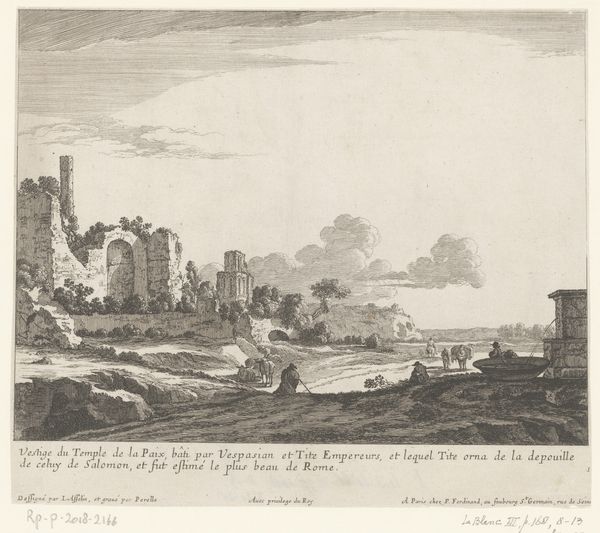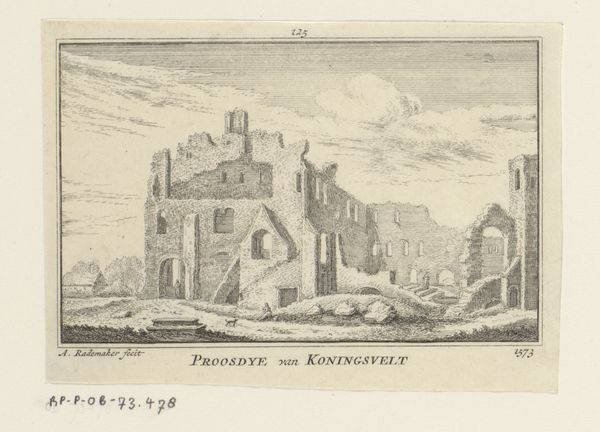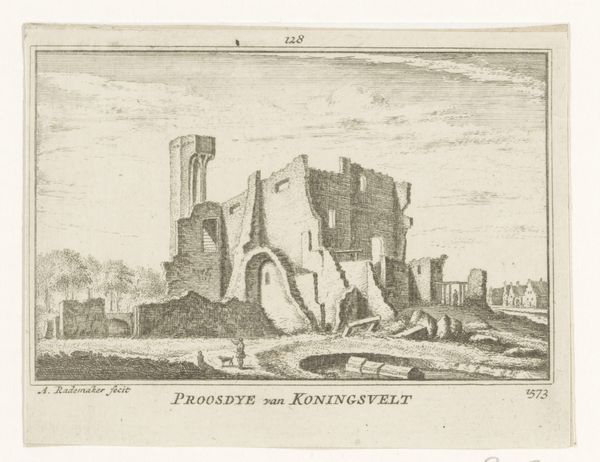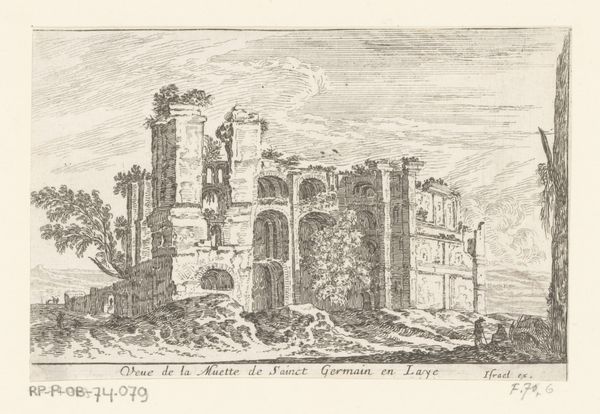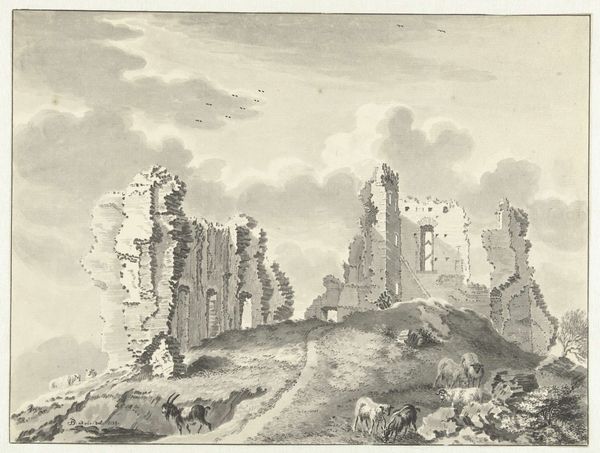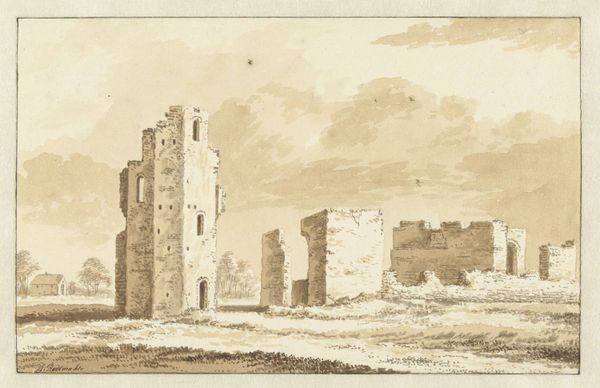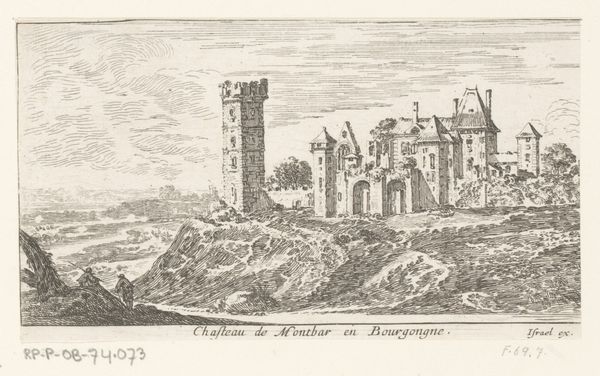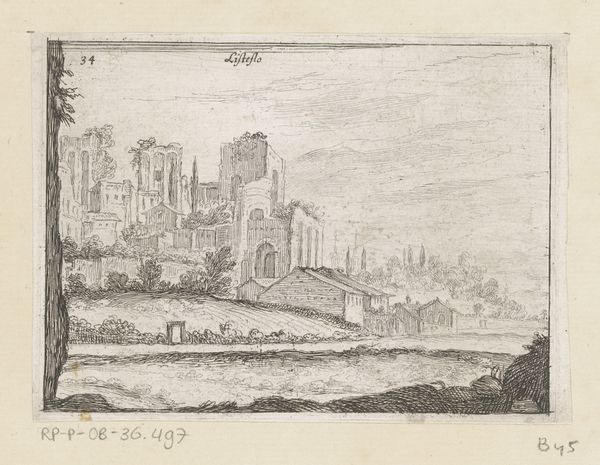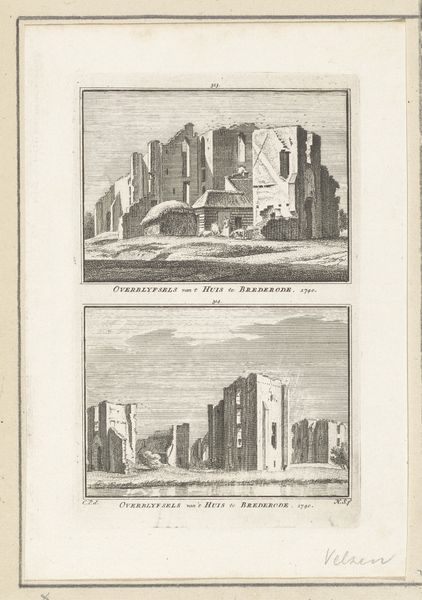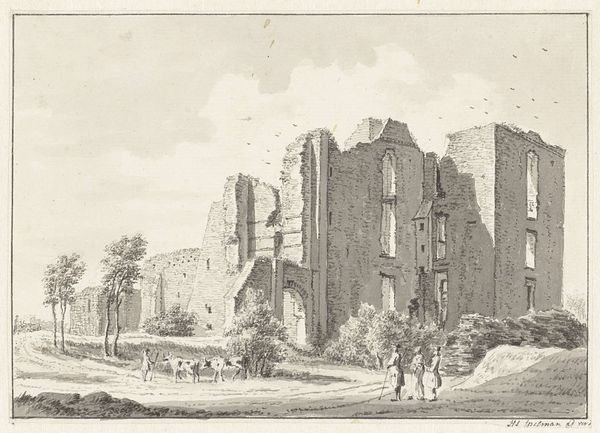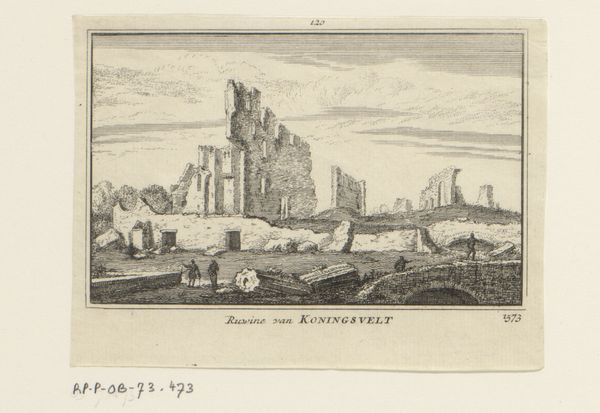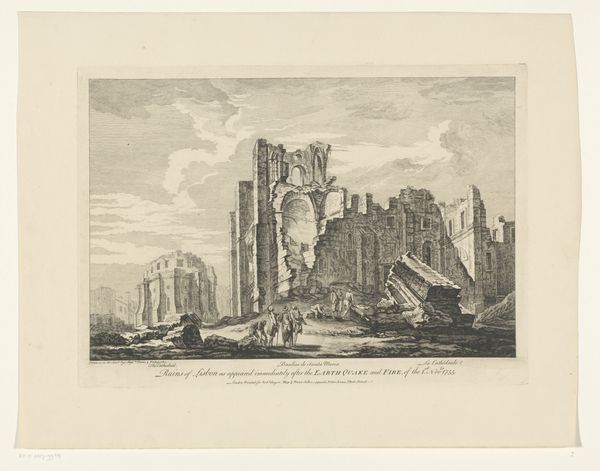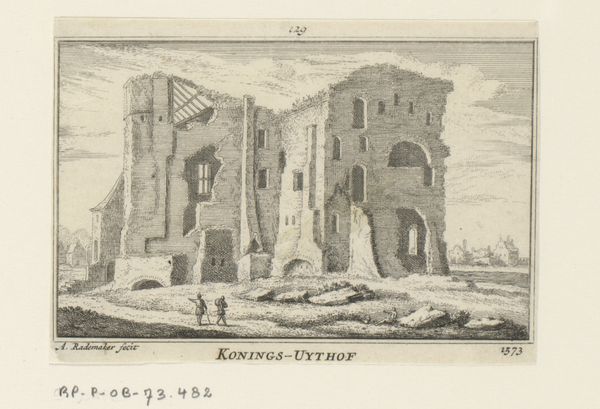
Gezicht op de ruïne van het klooster Koningsveld, 1573 1727 - 1733
0:00
0:00
abrahamrademaker
Rijksmuseum
print, engraving
#
baroque
# print
#
landscape
#
cityscape
#
engraving
Dimensions: height 80 mm, width 115 mm
Copyright: Rijks Museum: Open Domain
Editor: This engraving, "Gezicht op de ruïne van het klooster Koningsveld," by Abraham Rademaker, made sometime between 1727 and 1733, depicts the ruins of a monastery. I’m struck by the contrast between the detailed rendering of the decaying architecture and the mundane activities of the figures in the foreground. How do you interpret the choice to represent a ruin like this? Curator: This piece offers a potent statement on the cyclical nature of power and institutions. Consider the political context: the 16th century saw significant religious and political upheaval in the Netherlands. This monastery's ruin likely signifies more than just physical decay. It reflects a societal shift, a rejection of old orders. Who was benefiting from these images and why were these commissions being produced at that moment in time? Editor: So, showing the ruin becomes a kind of visual commentary? Like saying, “Look what happens to even the most powerful institutions?" Curator: Exactly. It served as a powerful, public facing reminder. Rademaker wasn't just documenting a landscape, he was participating in a dialogue about the transformation of Dutch society. How do you think the style – this Baroque approach – affects the message? Editor: Well, the detail lends it a certain gravitas, I guess. Makes it feel less like a simple record and more like a considered statement. The printmaking medium would have allowed for wide circulation, making the work all the more politically effective. Curator: Precisely. The choice of print is crucial to understanding its cultural impact. It was an accessible medium, allowing these ideas about societal transformation to circulate broadly, solidifying these ideologies as the dominant view. It's fascinating how a landscape can become such a politically charged image. Editor: I see now. It's not just a pretty picture; it's a historical document, shaped by the politics of its time. I hadn’t thought about how the printmaking method enabled distribution of imagery or the public perception, it’s made me rethink everything.
Comments
No comments
Be the first to comment and join the conversation on the ultimate creative platform.

